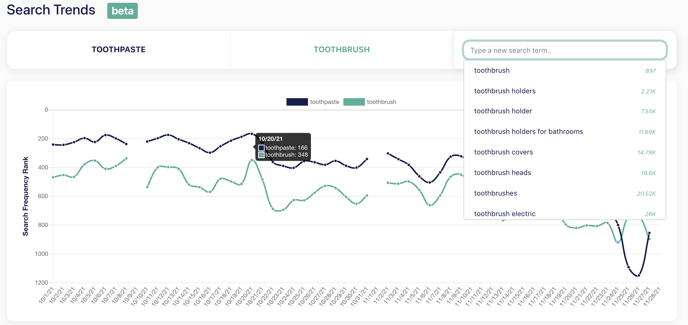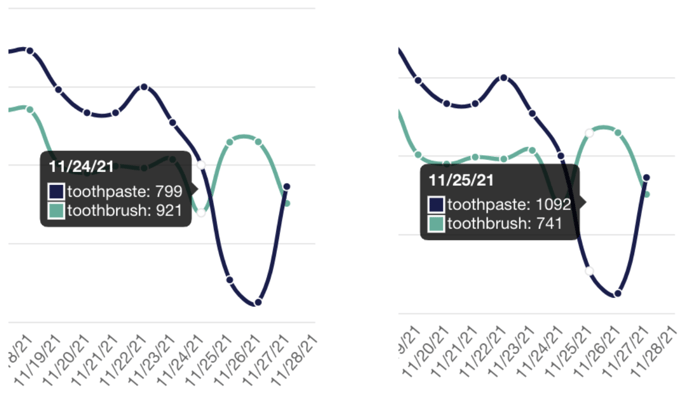Search trends report
Amazon Search Frequency Rate (SFR) is the numeric rank of any given search term’s popularity compared to other search terms during a specific time period.
The search trends report let you :
- Compare how a search term rank across time-based on Amazon search terms report
- Compare search term ranking (the higher the curve is, the closer to the top the search term is)
The report is based on Amazon Search Frequency Rate. It does not give insight into the impressions or clicks of a given keyword. Think of it as a metric of relative competition among keywords.
When the ranking of a keyword improves from one week to another (the ranking decreases but the curve goes up), it means that the keywords are more researched than it was a week ago compared to other keywords.
The lower the ranking, the more attractive a keyword is, hence the curve is higher for lower keywords.
We recommend you analyse a wide time period to better understand how keywords compete
We estimate the monthly search volume for each keyword you type!
 Quick example
Quick example
Imagine that we compare two keywords: "toothpaste" and "toothbrush" on 2021-11-24 and 2021-11-25 :
- toothpaste is ranked 799 on 2021-11-24, then is ranked 1092 on 2021-11-25
- toothbrush is ranked 921 on 2021-11-24, then is ranked 741 on 2021-11-25
As you can see on the curve below, toothpaste had a better ranking than toothbrush on 2021-11-24 but then it was the opposite. It means that toothpaste was more attractive than toothbrush and then toothbrush was more attractive.
Keep in mind that it does not reflect their impressions or clicks! Toothpaste being less attractive than toothbrush on 2021-11-25 does not mean that researches for toothpaste decreased ! It is possible that all Amazon researches increase for toothbrush but research for toothpaste stayed the same.

![m19-transparent.png]](https://help.m19.com/hs-fs/hubfs/m19-transparent.png?height=50&name=m19-transparent.png)